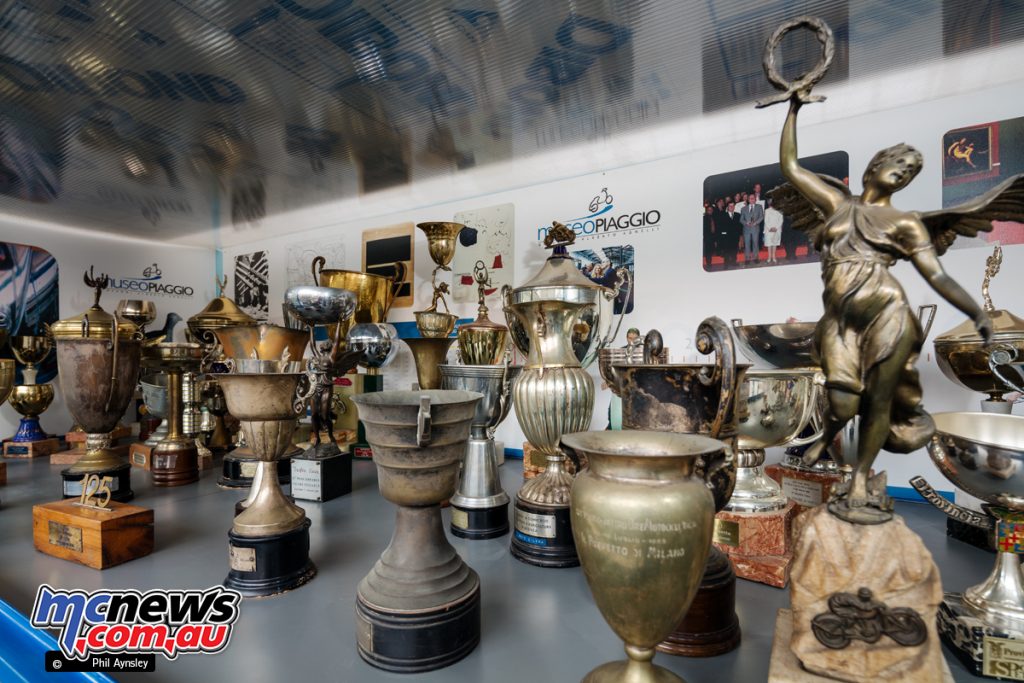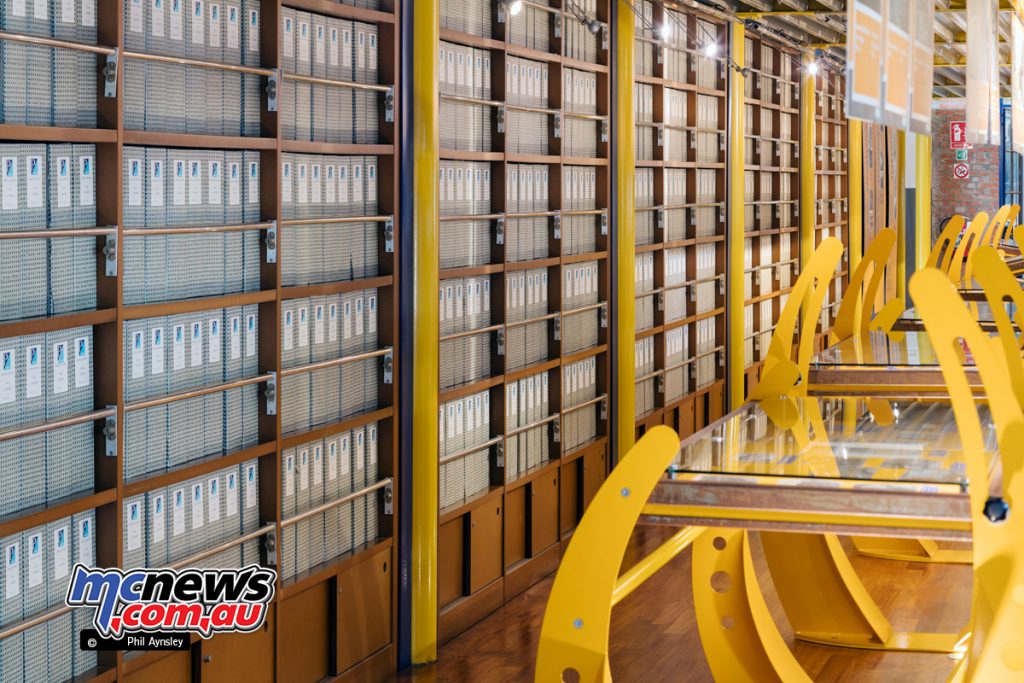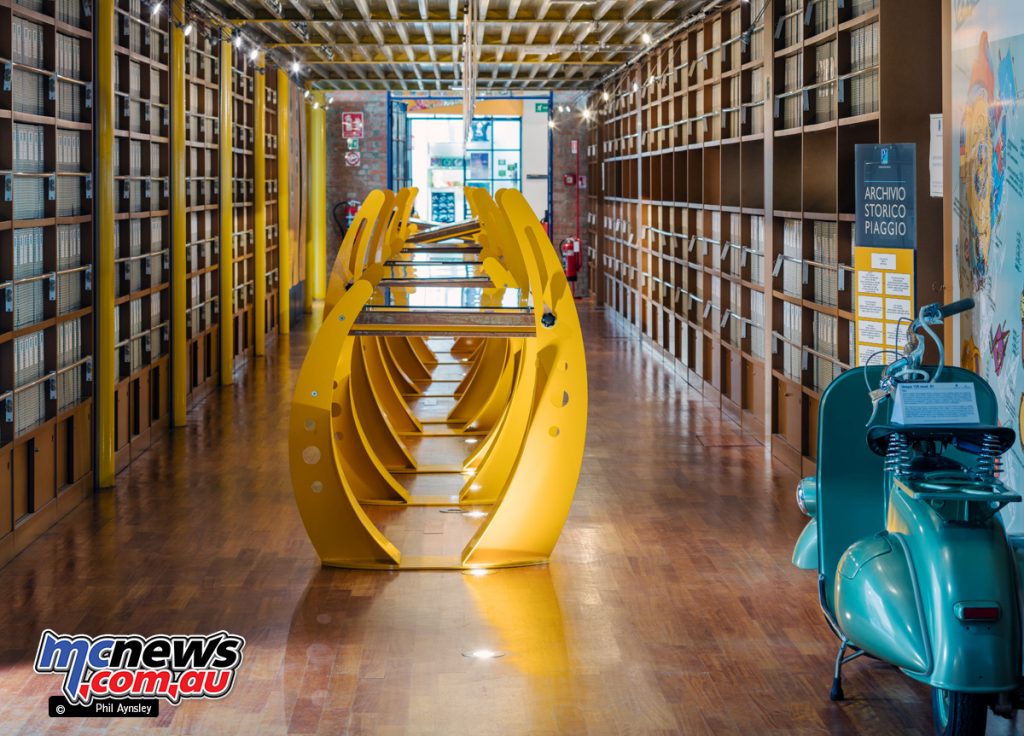Piaggio Museum
Part One
With Phil Aynsley
I’ve been lucky enough to have had the run of the Piaggio Museum twice – once soon after it opened, in 2000 and again in 2015, after it had been remodelled. Most of the images here are from the most recent trip although I have included a few shots of individual machines from my first visit.
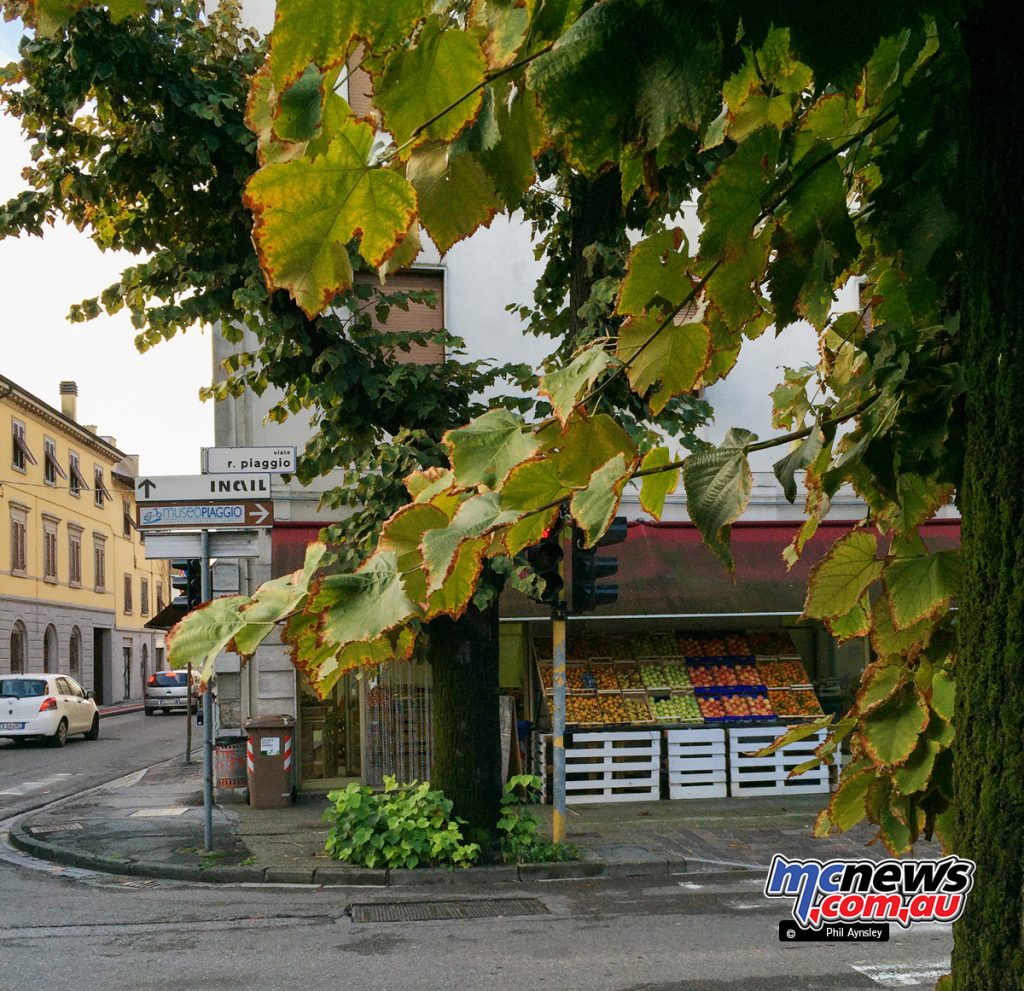
The museum opened in March 2000 in what used to be the company tool shop in the factory in Pontedera, near Pisa. The 3000 square metres of floor space displays just about every Vespa model ever built plus a range of Gileras and other Piaggio items such as the Treno MC2 de 54 electric rail locomotive from 1936 (Piaggio was the first company in Italy to build stainless steel rail stock, in the 1930s).
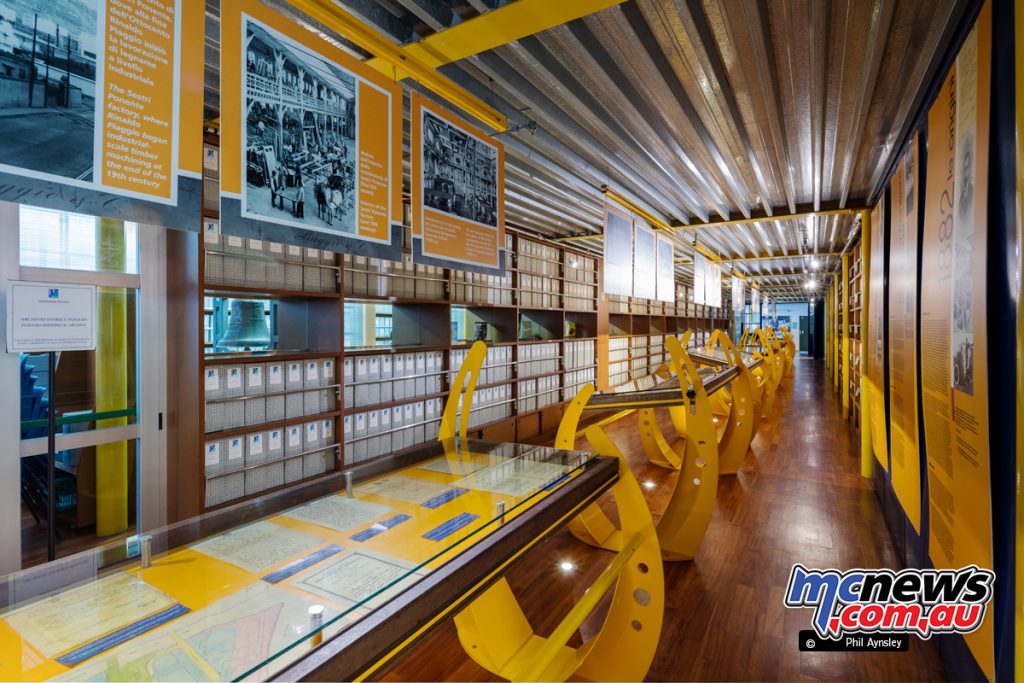
One particularly nice touch is the way the company archives are housed. You literally are able to walk through the company’s history!
Two famous bikes greet the visitor inside the entrance. The record-breaking 1937 500 Rondine Carenata and the 1939 500 Rondine GP (click here for the full feature). The Carenata used one of the six bikes acquired from CNA in 1936 as its basis.
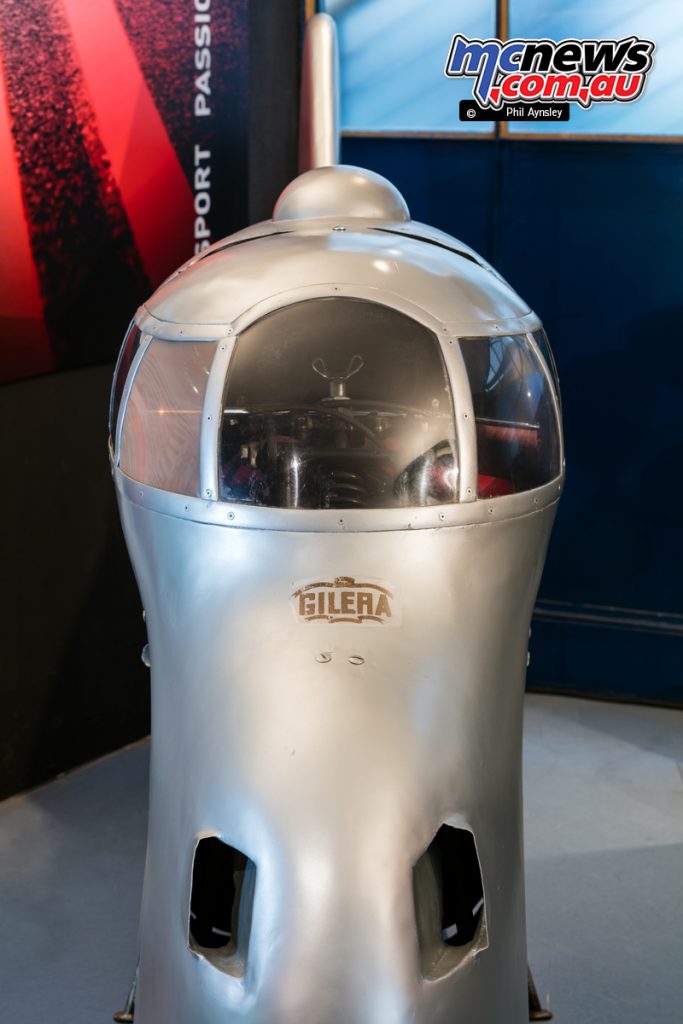
A longer frame, modified wheels and the fully enclosed fairing (developed in Caproni’s wind tunnel) were fitted. In October 1937 Piero Taruffi set an absolute speed record of 274.181kph with the bike, then in 1939 a one hour record of 205kph.
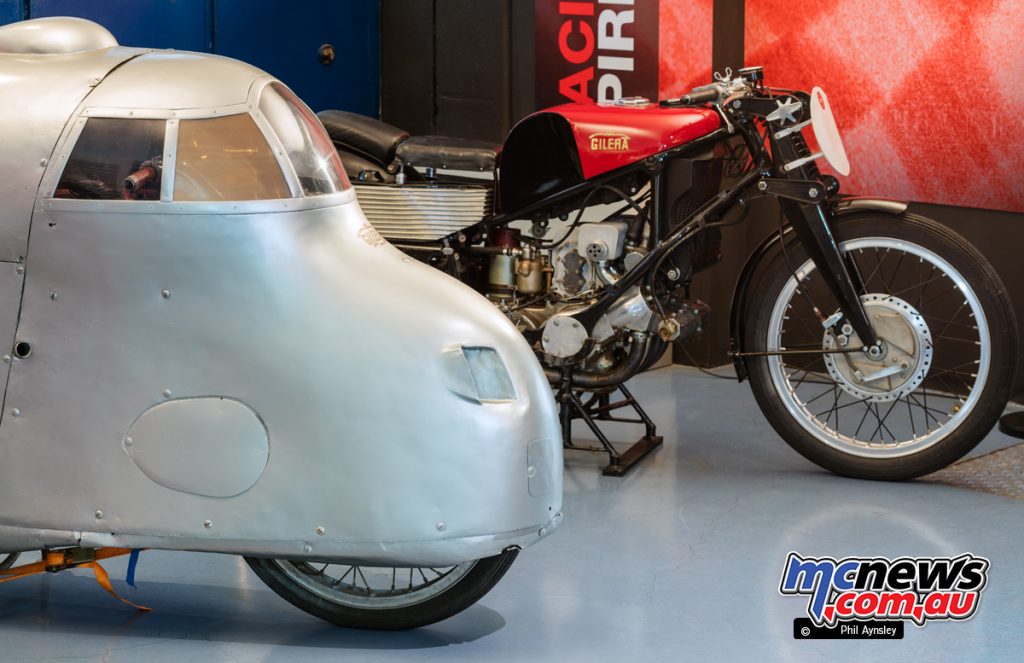
A re-creation (using the original furnishings) of Corradino d’Ascanio’s studio – including the MP6 prototype.
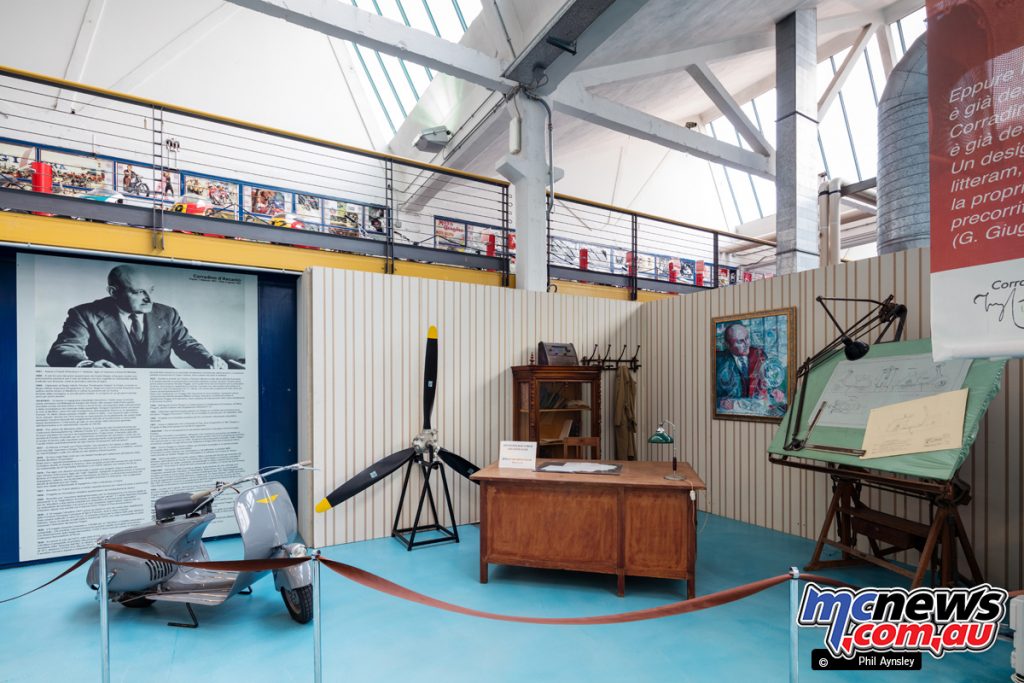
Some overall views of the museum interior.
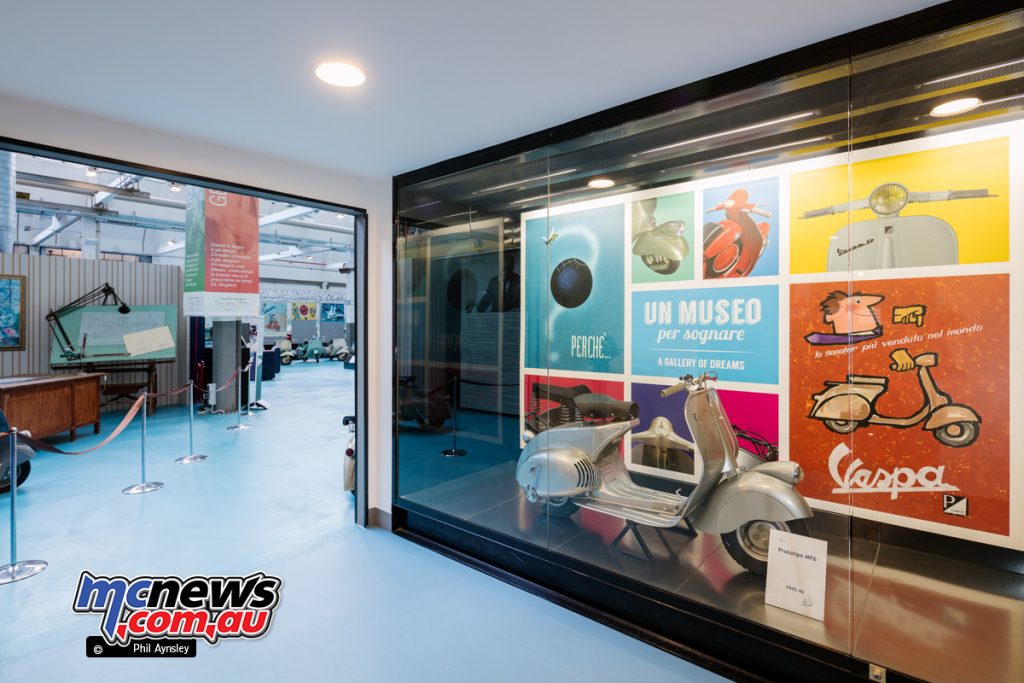
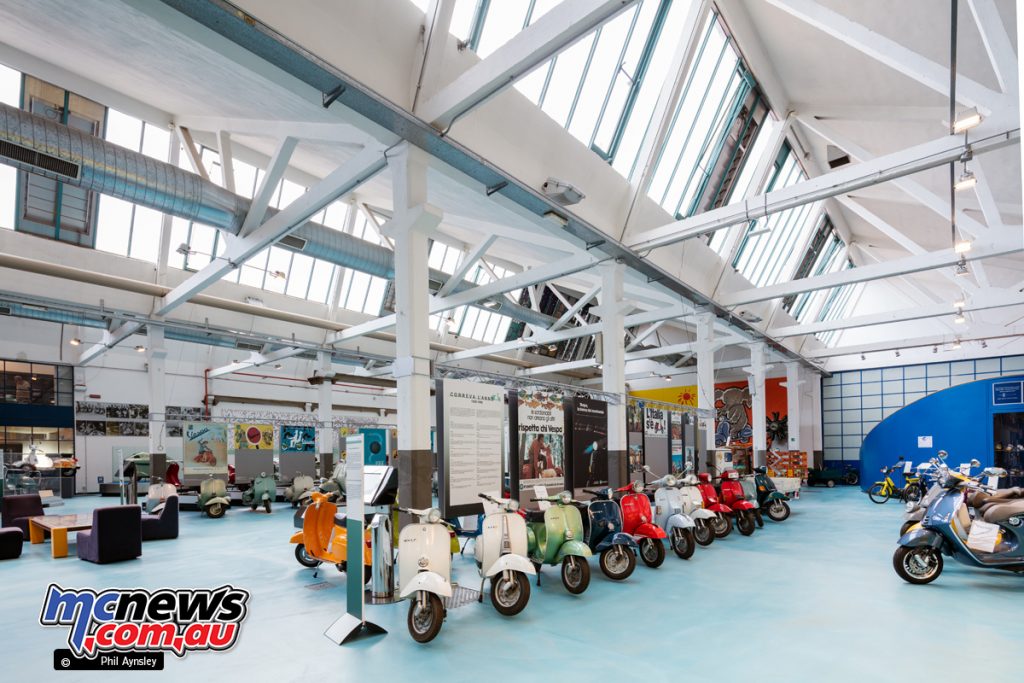
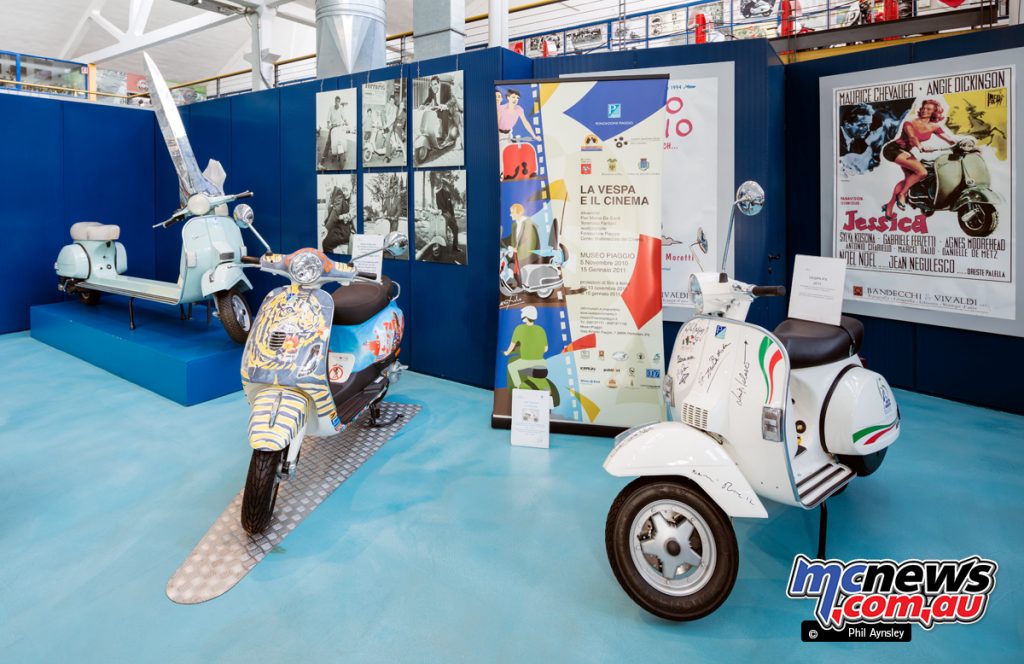
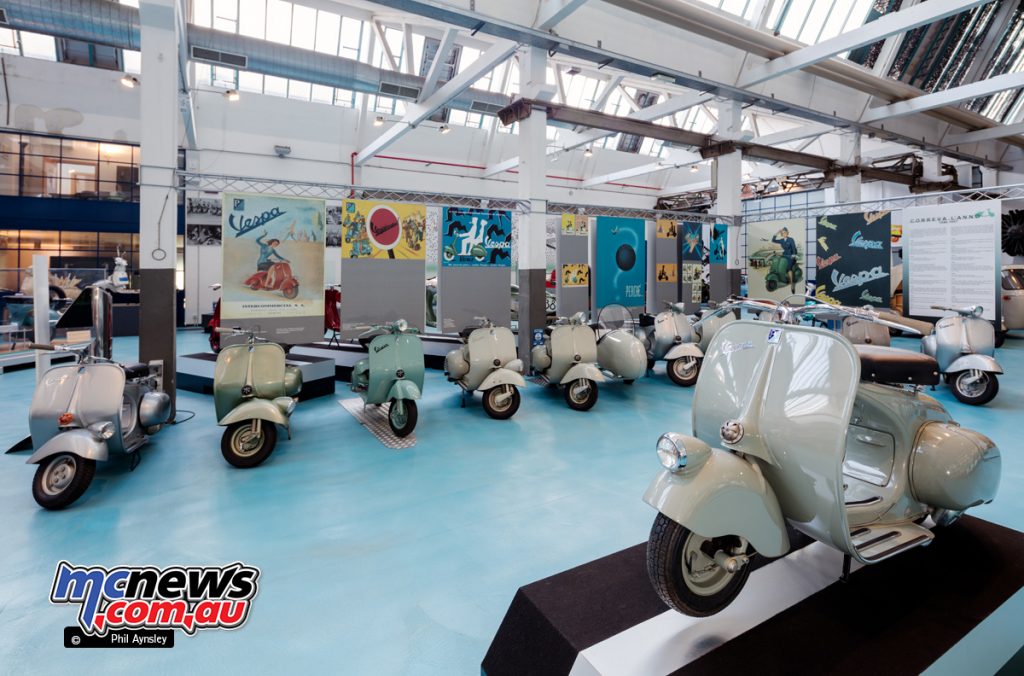
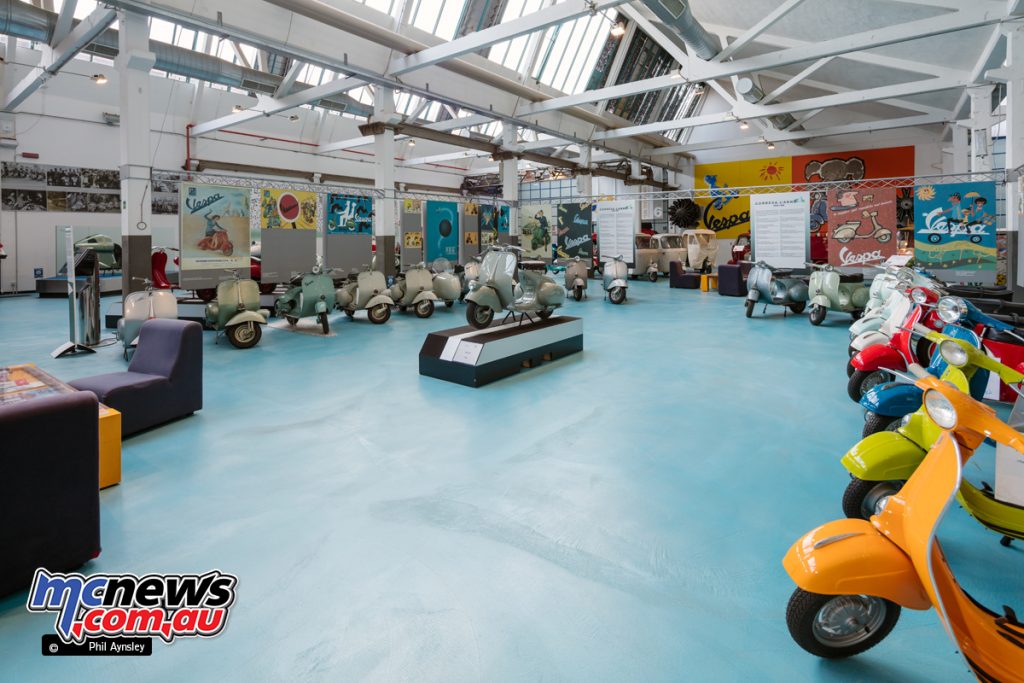
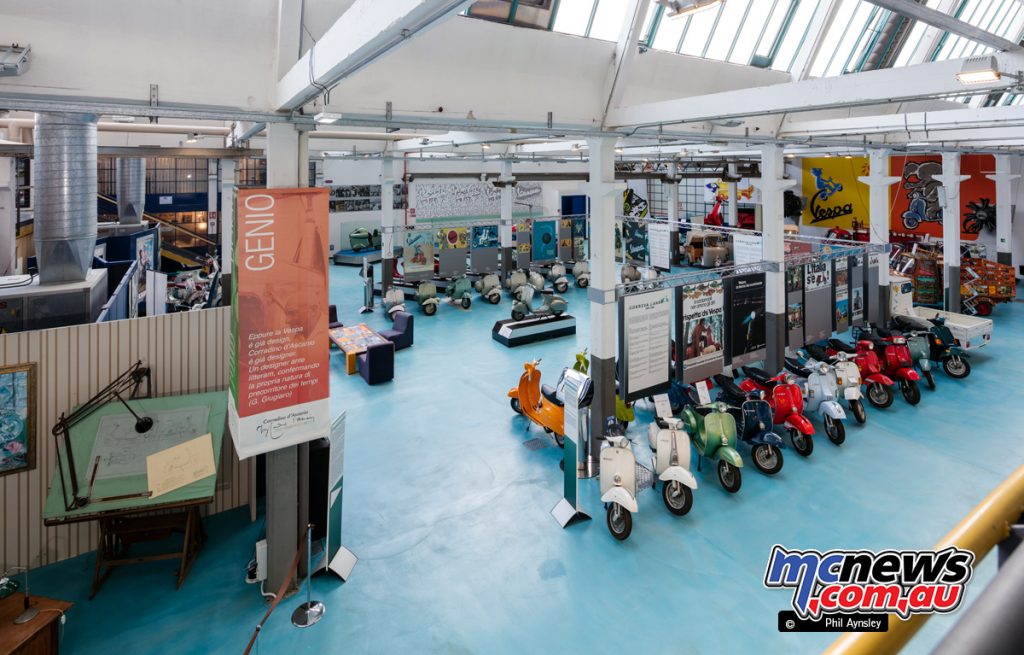
The 1943-44 MP5 prototype designed by engineer Renzo Spoiti. Known as the “Paperino” (Donald Duck) the MP5 saw very limited production (about 100) before it was superseded by the first Vespa (the MP6 prototype in the background).
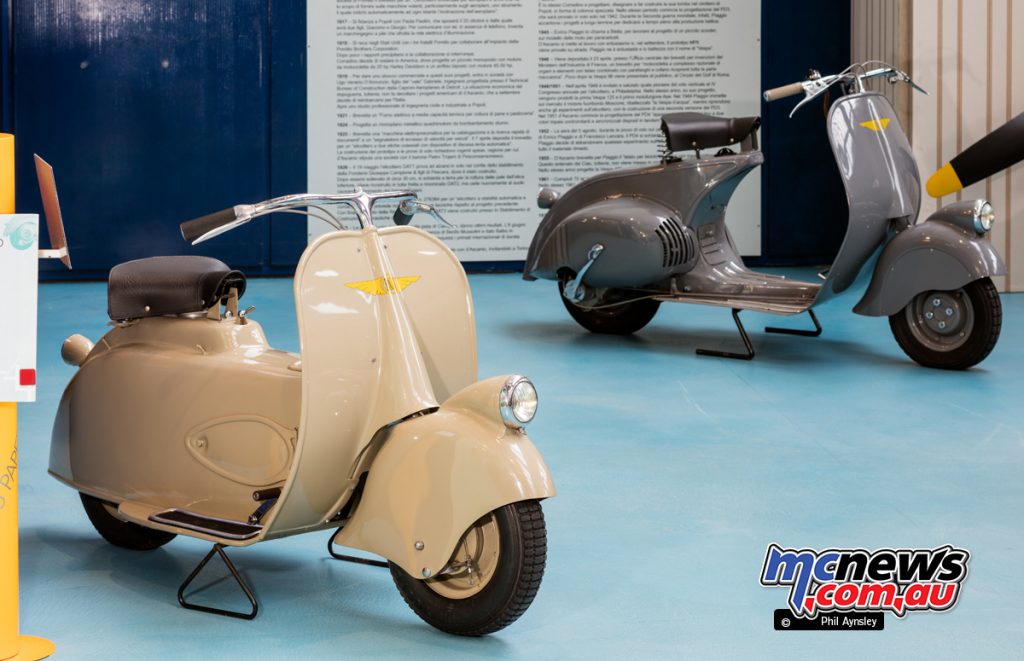
Possibly the most valuable scooter in the world! In 1962 two Spanish students embarked on a trip from Madrid to Athens on their Vespas. At their first stop, in Cadaquez, they met Salvador Dali – who proceeded to decorate their scooters!
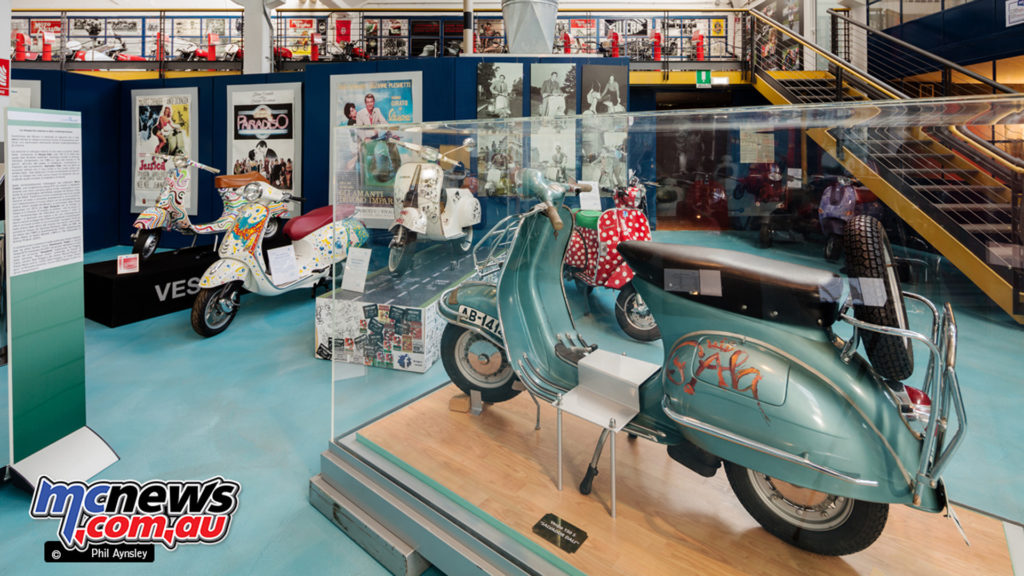
This 125cc green machine, piloted by three riders, set 17 world records at the Mothlery circuit in France in April 1950. They included: 1 hour – average speed 134kph, 100 miles – average 129.7kph, 500 miles – average 123.9kph, 1,000km – average 124.3kph and 10 hours – average 1,094km.
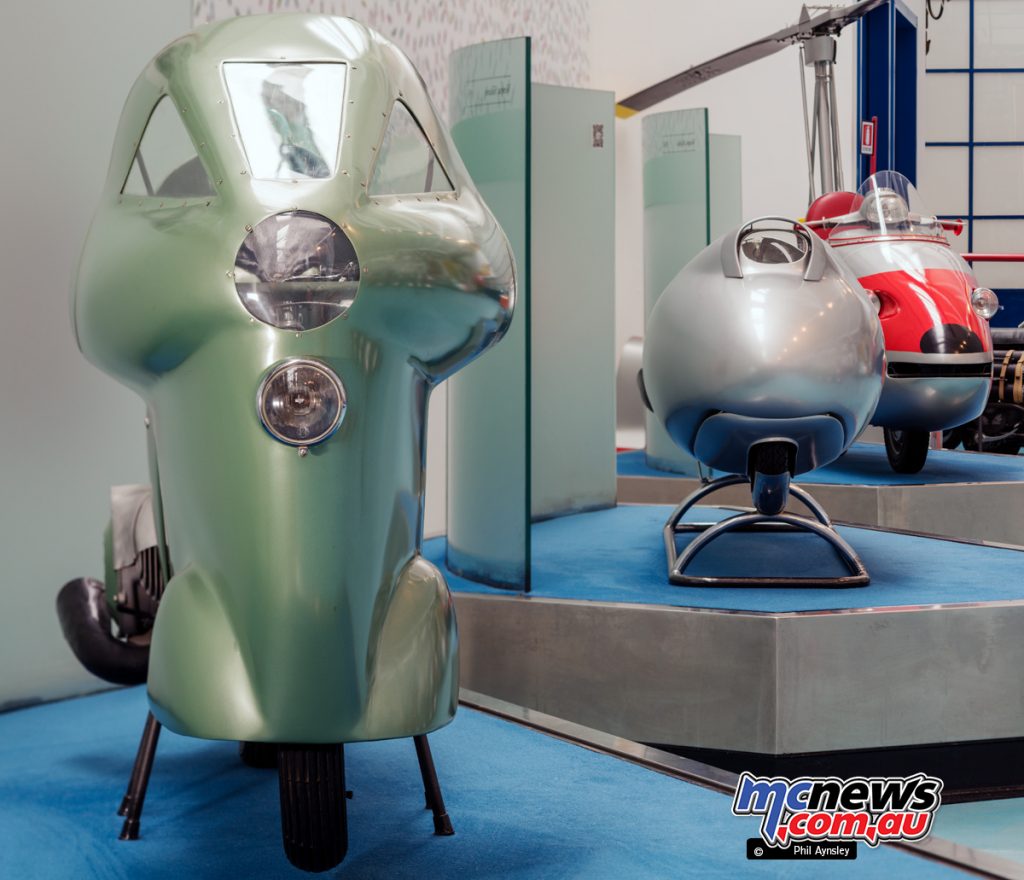
One of my favourite shapes! The Siluro was designed in 1951 to break the standing kilometre world record. In February on the Rome-Ostia motorway, rider Dino Mazzoncini broke the record with a time of 21.4 seconds and an average speed of 171.1kph. The very organic design (by Corradino d’Ascanio) used a 125cc water-cooled 2-stroke with twin horizontally opposed pistons that made 17.2hp at 9,500rpm.
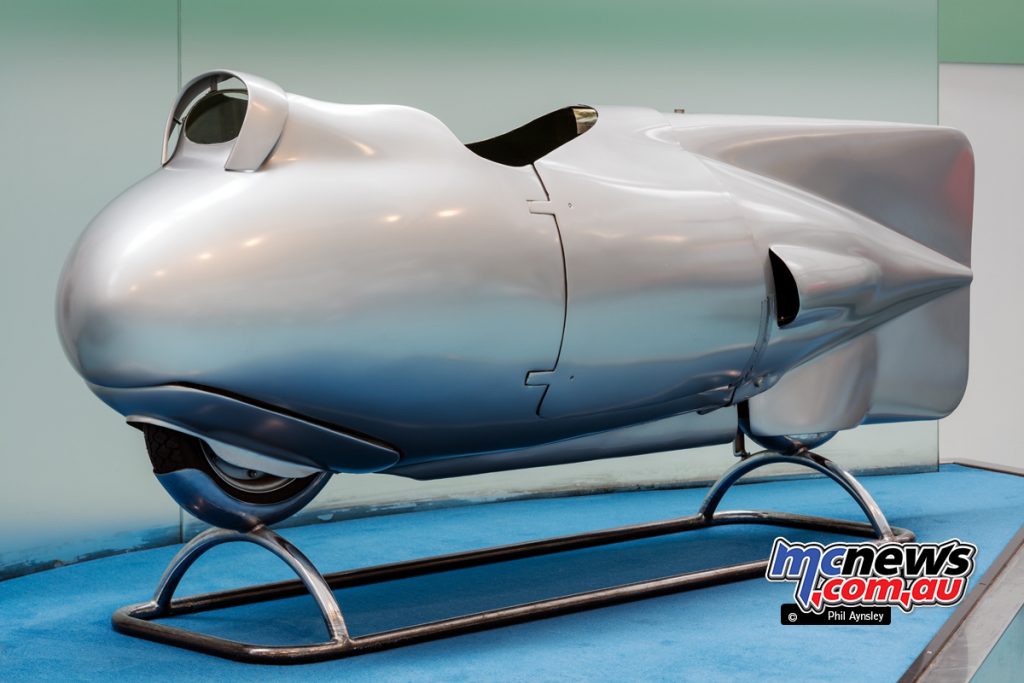
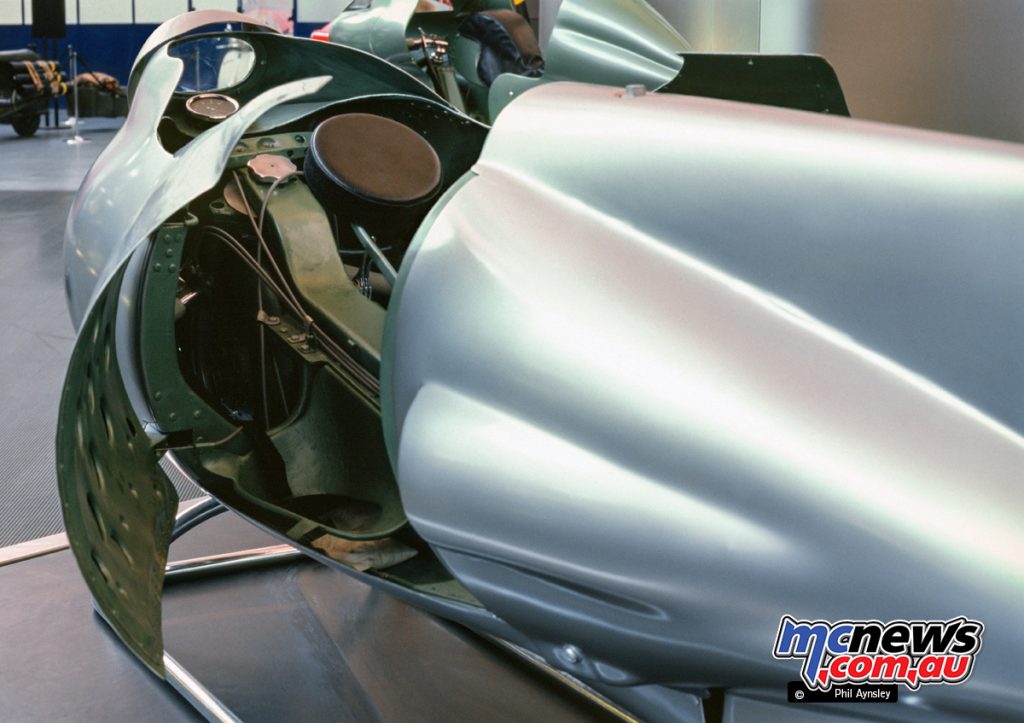
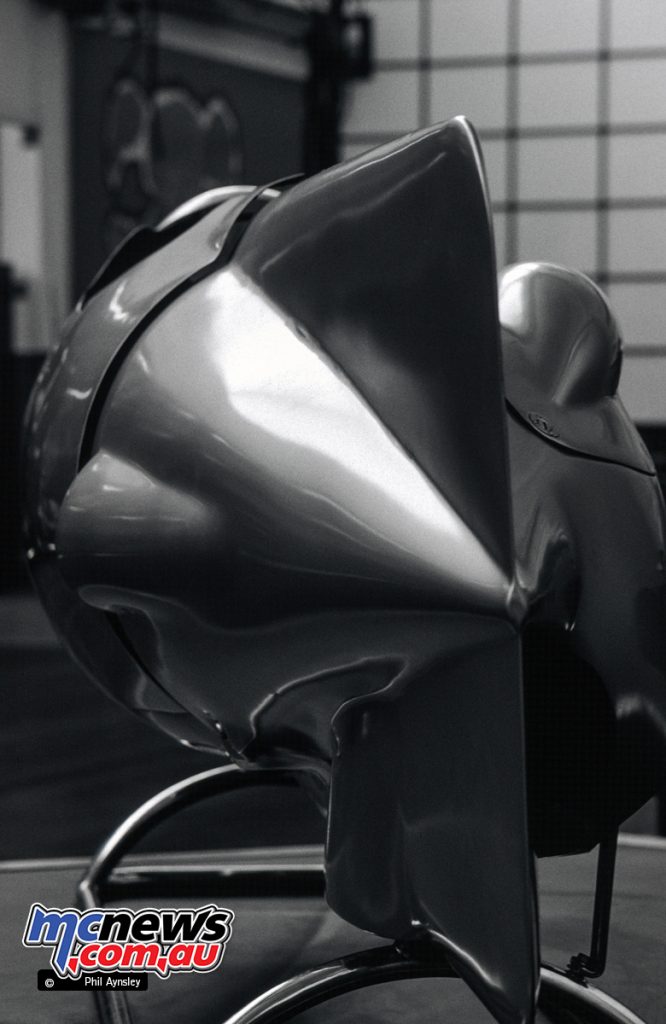
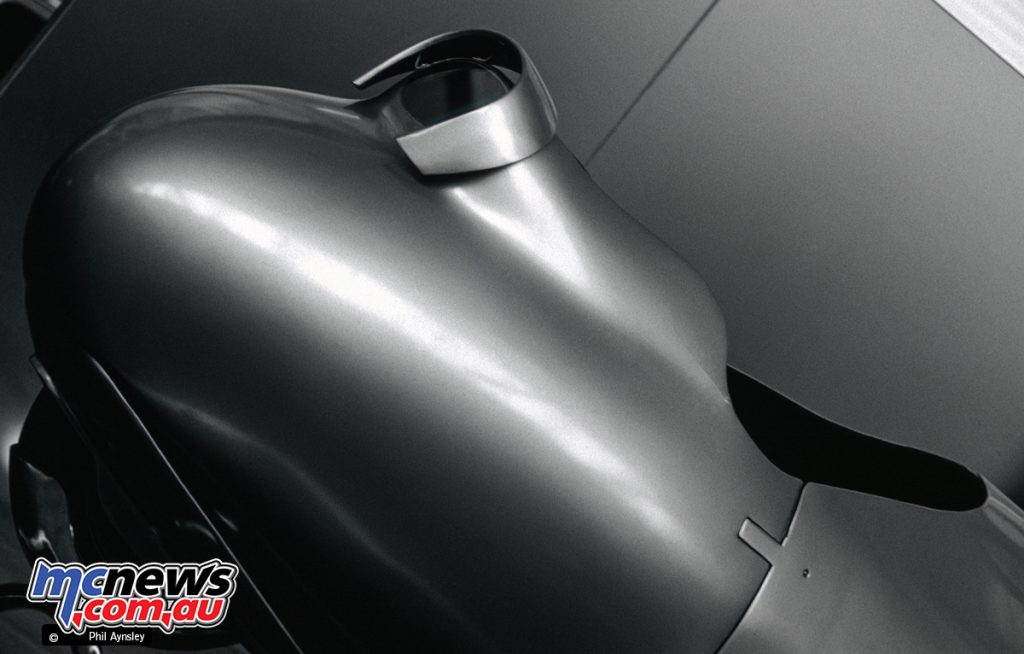
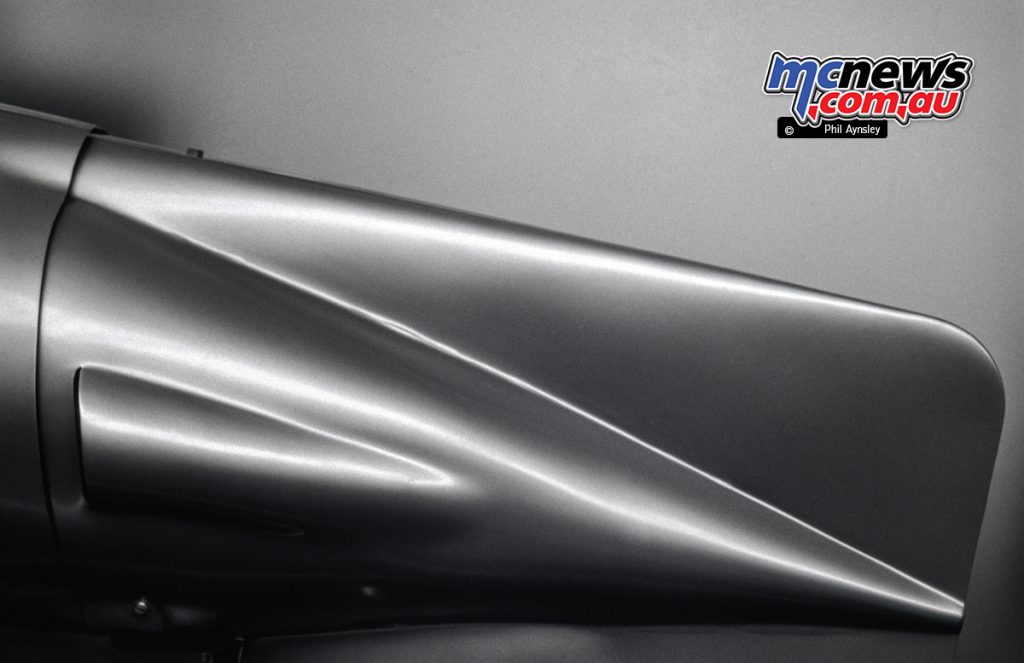
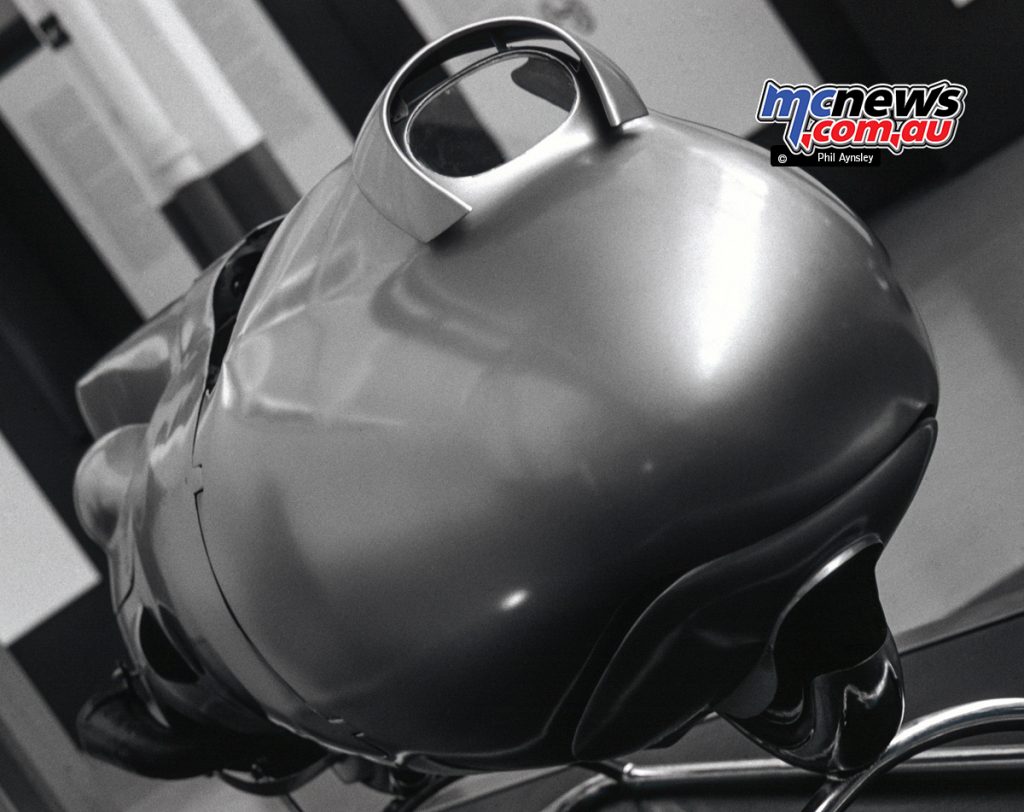
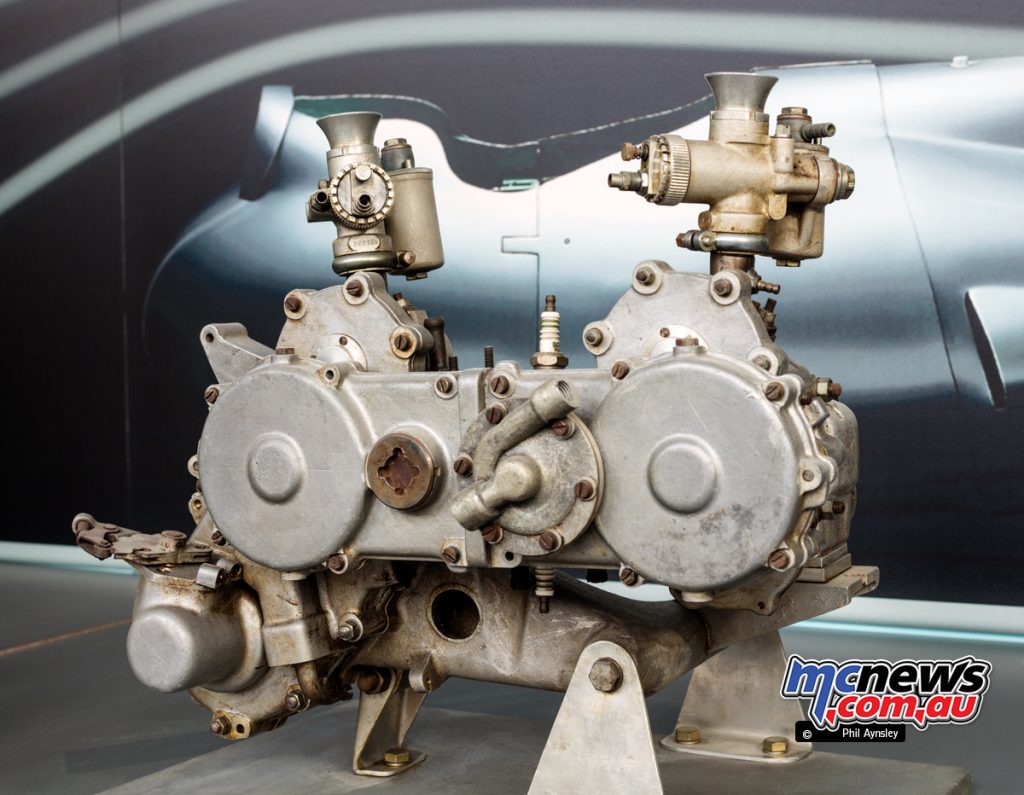
The single example of the Vespa Alpha was built for use in the 1967 film “Dick Smart, Agent 2007”. A 180 Super Sport was modified by Piaggio and the British Alpha Willis firm to not only be roadworthy but to also fly and operate underwater!
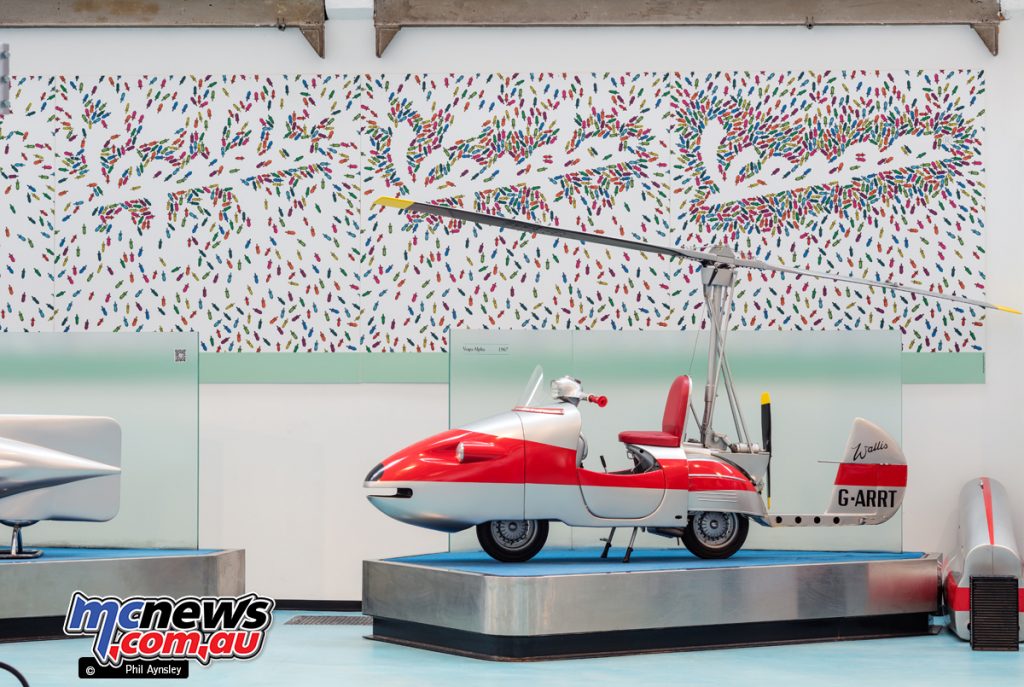
The very large scale model built in 1977 to promote the launch of the “New Line” models at the Paris Show.
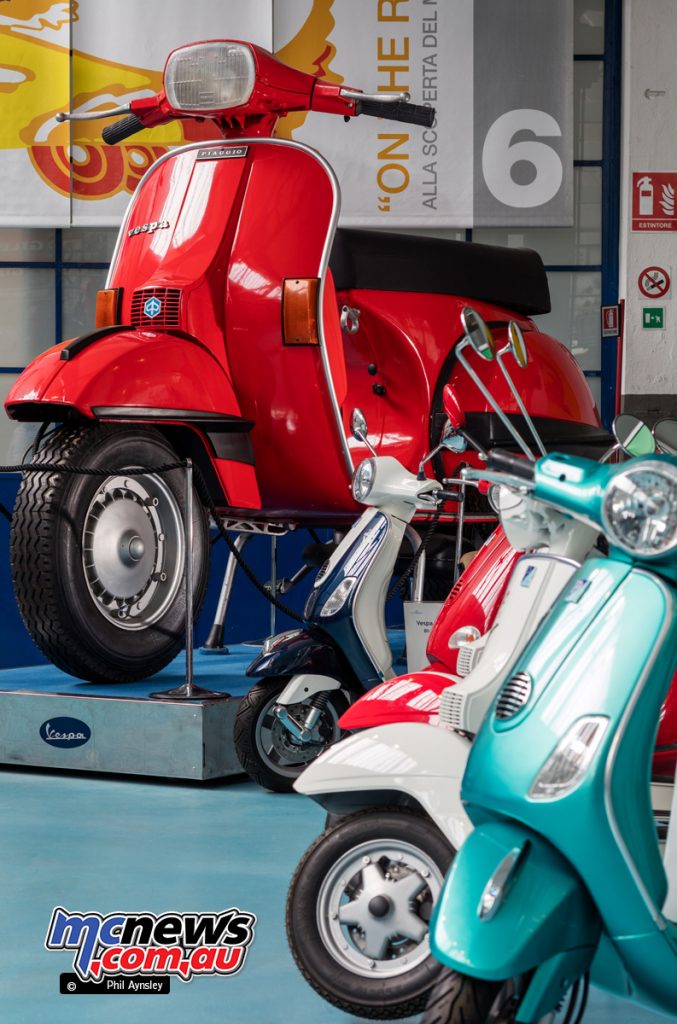
Traffic getting too much for you? You need one of these! The Vespa 150 T.A.P. (Truppe Areo Portate) was built by Piaggio’s French licensee (A.C.M.A.) to meet a French specification to equip paratroop and Foreign Legion units.
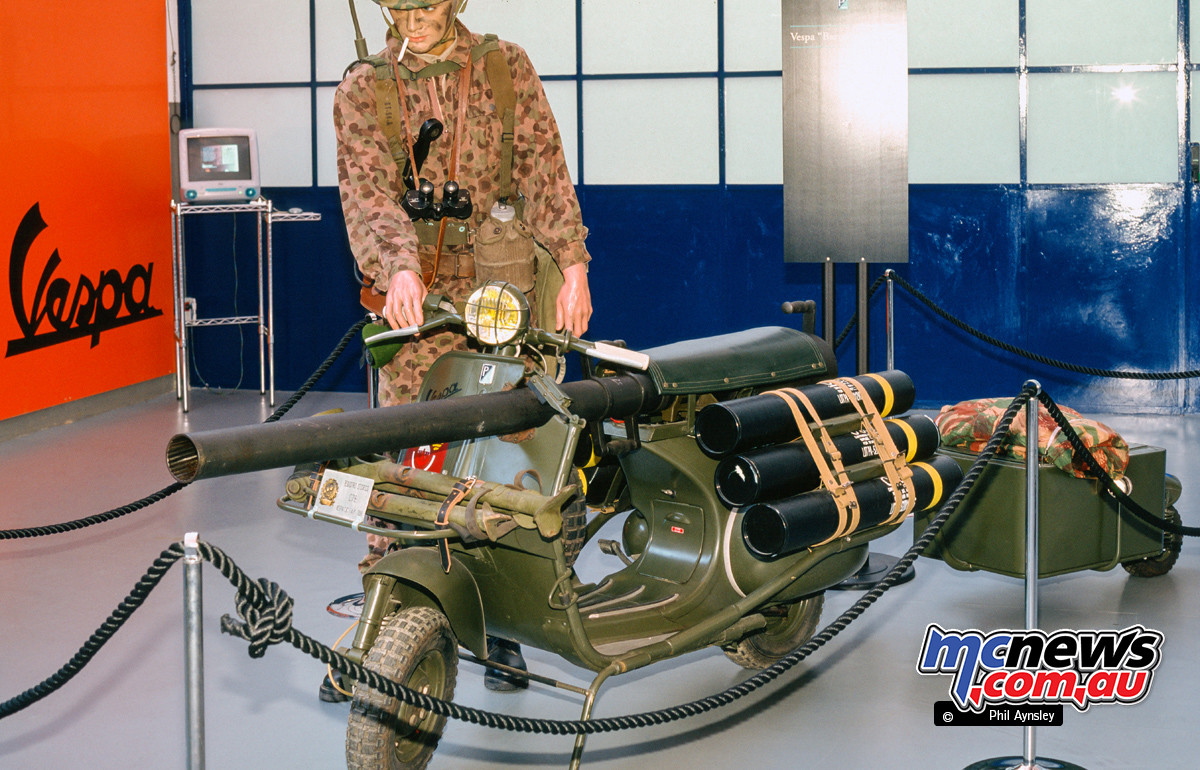
Approximately 600 were constructed between 1956-9. They were fitted with a 75mm recoilless cannon with 6 rounds, 2 jerrycans and a small trolley. (2000)
An Ape used as a fire fighting unit.
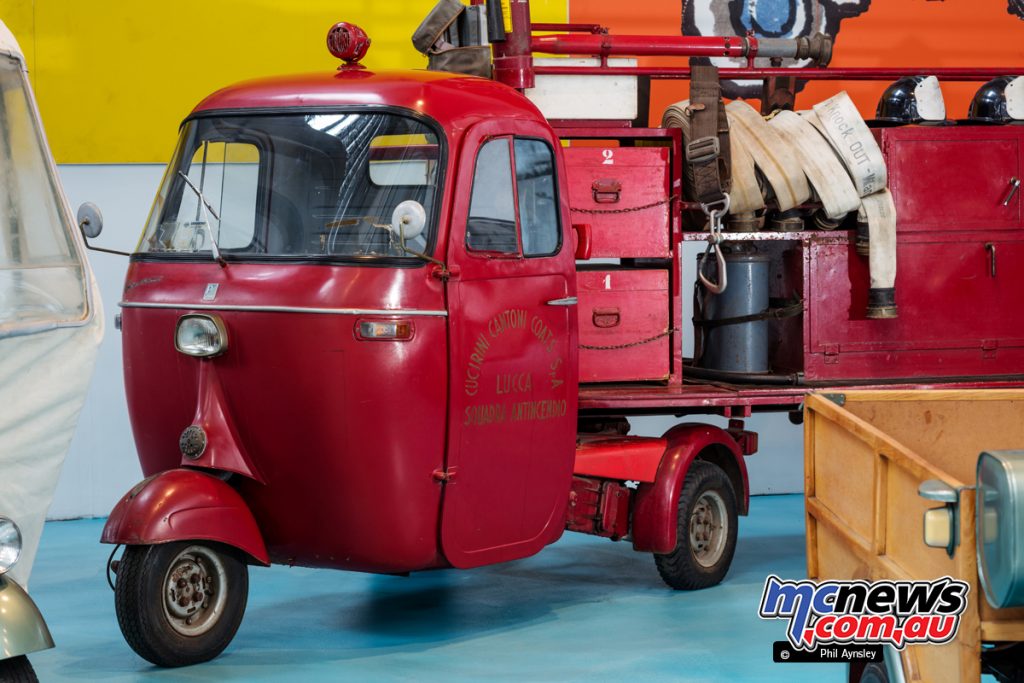
A couple of competition scooters. L: 1947 Vespa 48 Circuito. R; Vespa 48 Corsa.
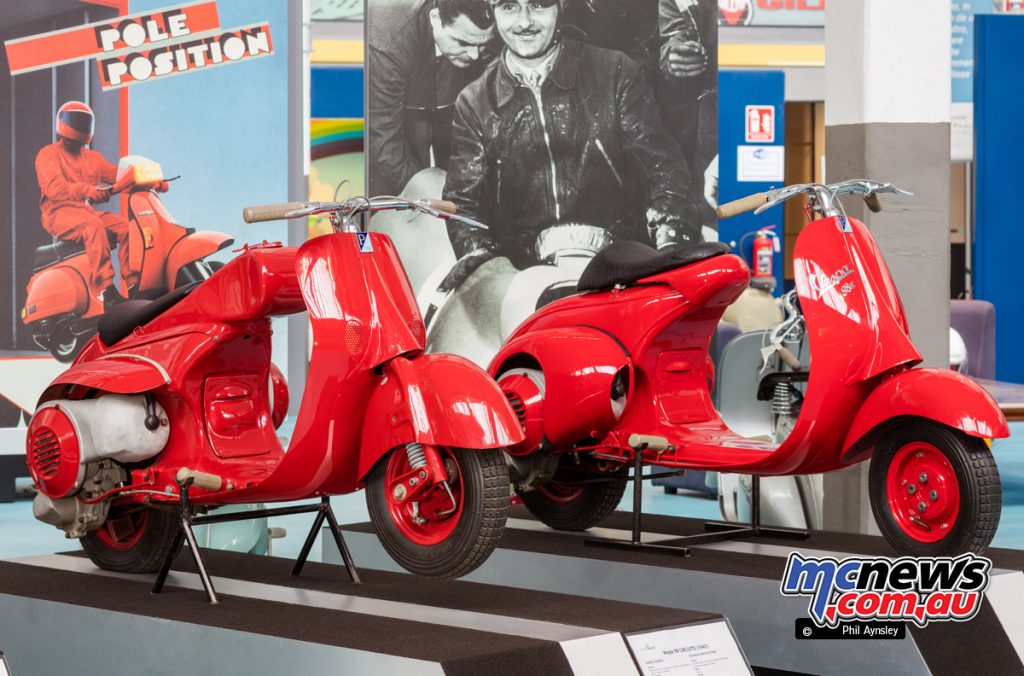
Off road scooters! 1951 125 Sei Giorni (Six Days). One of nine factory entries that won Gold at the 26th ISDT held at Varese.
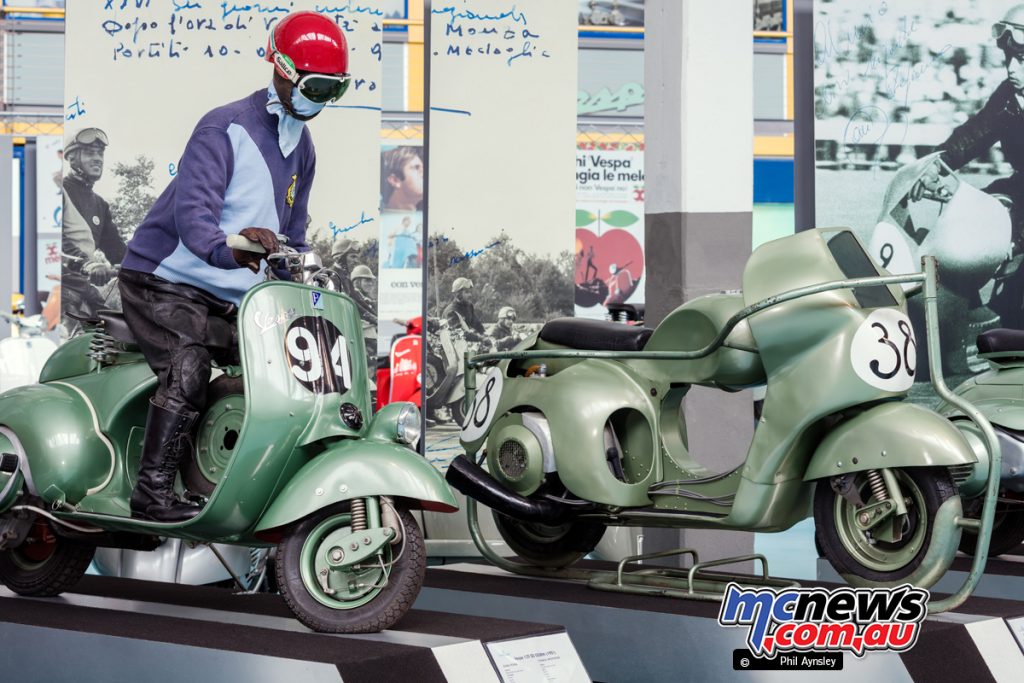
1985 T5 Paris-Dakar.
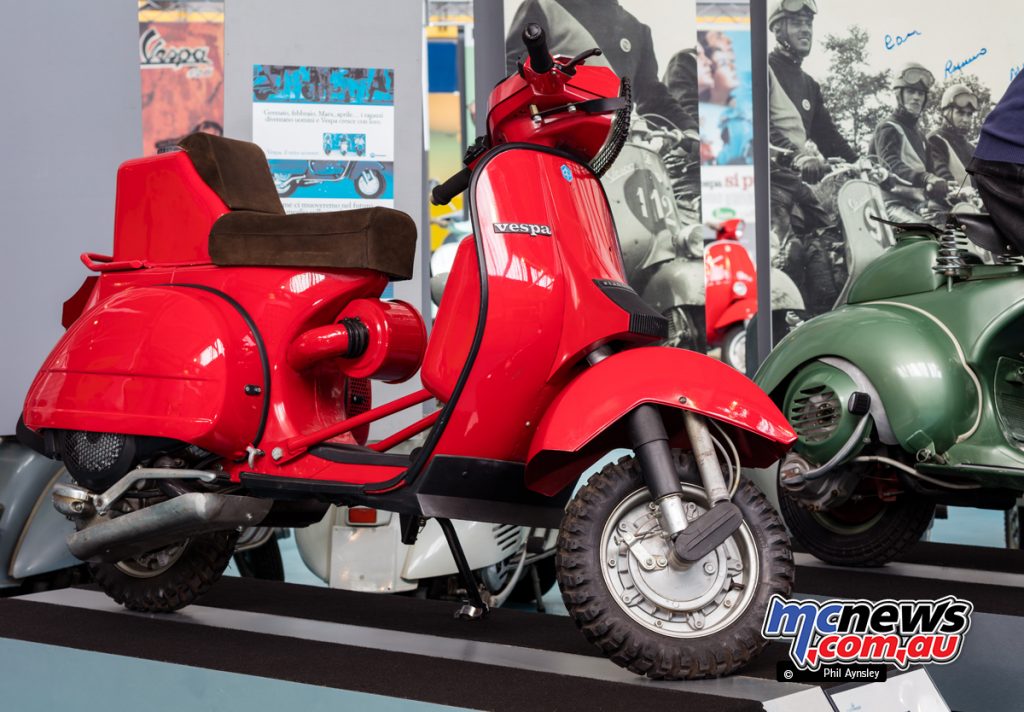
1955 Vespa moped prototype.
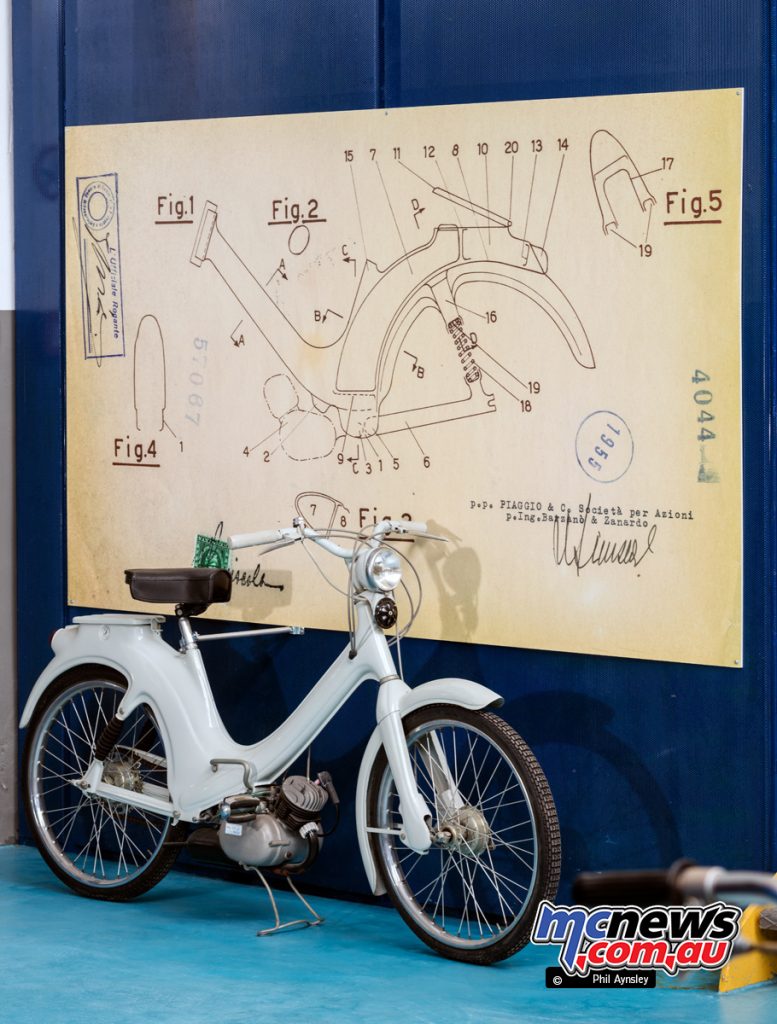
Vespa trophy cabinet.
